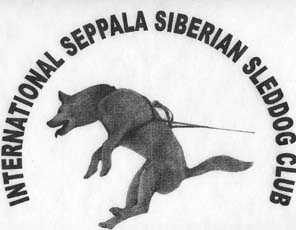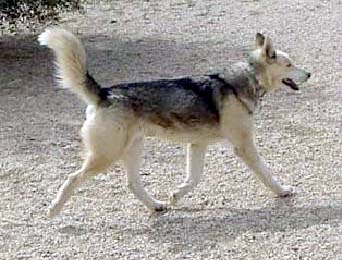Table of Contents
*
We Are Not Alone
*
Research Paper II: Occupational Osteoarthritis
*
Who is an ISDI "Member"
*
Northern Inuits (sic), Again!
*
High Arctic Mushing: Part IV
*
The Inuit Dog: Its Provenance, Environment and History
*
Preserving "Bear" Dogs
*
Janice Howls: Extinction
*
IMHO: Little Minds, Little Worlds
*
Index of The Fan Hitch, Volume IV
Navigating This Site
Index of articles by subject
Index
of back issues by volume number
Search The
Fan Hitch
Articles
to download and print
Ordering
Ken MacRury's Thesis
Our
comprehensive list of resources
Talk
to The Fan
Hitch
The Fan Hitch
home page
ISDI
home page
Editor: Sue Hamilton
Webmaster: Mark Hamilton
Contents of The Fan Hitch Website and its publications are protected by international copyright laws. No photo, drawing or text may be reproduced in any form without written consent. Webmasters please note: written consent is necessary before linking this site to yours! Please forward requests to Sue Hamilton, 55 Town Line Rd., Harwinton, Connecticut 06791, USA or mail@thefanhitch.org
What is relatively new, and a little closer to home for ISDI enthusiasts, is recent word of the birth of the International Seppala Siberian Sleddog Club (ISSSC), a cadre of Seppala strain Siberian Husky owners and breeders who, for a number of reasons, are fed up with the American/Canadian Kennel Club system and show dog scene and who seek to reinvigorate the breed in their vision as a true sled dog. This club has a breed standard, a plan, a registration system, a breed preservation project with detailed criteria for stud and brood bitch selection, details of which can be accessed at their web site: < http://www.seppalas.com/>.
While the issues facing the Siberian Husky and the philosophy of the ISSSC may not exactly parallel ISDs and the ISDI, both groups share a common appreciation of the heritage of the true working sled dog and a keenness to preserve them as such. We wish the ISSSC smooth ice and narrow leads on their mission. Ed.
We Are Not Alone...

The Seppala Siberian Sleddog
and the Continental Kennel Club
by Doug Willett, Seeley Lake, Montana, U.S.A.
Breaking Away
We have separated from the major registries (American and
Canadian
Kennel Clubs) for several reasons, among which are to:
* escape absorption into the general Siberian Husky
population, most
of which is inept as sled dogs
* gain the freedom to combat genetic drift and genetic
problems in
general
* have greater control over our dogs' destiny, rather than
being strapped
into a system that often creates policies, standards and
awards with no
connections to our desires or needs
* escape the ever-increasing, cumbersome regulations, fees
and penalties
of the American and Canadian Kennel Clubs, who act more
and more like big
corporations subject to shareholder whims, rather than a
registry servicing
dog breeders
* create meaningful awards and recognition programs for
our dogs or
again, gaining control
We have chosen to register with the Continental Kennel Club, which is attempting to be international in scope, despite having trouble establishing in Canada because of opposition from the Canadian Kennel Club. The Continental KC has been very helpful and cooperative, has controllers sympathetic to the needs of working dogs and their owners, and has a system of fees and regulations that are imminently reasonable. The Continental KC is an open registry, and we have established a registration procedure which allows appropriate dogs that are 15/16 pure to be registered as purebreds. With the continual deterioration in soundness and health experienced in most purebreds today, an open registry is reasonable and sensible and destined to be the registry of the future. To get more information on the Continental KC, I suggest that you look at their web site : http://www.ckcusa.com/

Race of Sepp-Alta, the first dog
registered by the Continental
Kennel Club as the new breed,
Seppala Siberian Sleddog. There are over
200 dogs now
registered.
ISSSC
website, Patti Carpenter photo
A Vision of the Future
It has been suggested, mostly by the advocates of that
regal organization,
the American Kennel Club (AKC), that an open registry
would destroy the
purebreds. This is a spurious statement used to distract
and excite the
faithful. If properly administered, an open registry
will have exactly
the opposite effect. It will save the purebreds from
genetic deterioration.
That is a biological fact which is especially crucial to
small populations
such as the Seppala Siberian.
The argument is that outside genes will overwhelm the Seppala genes, and so there will no longer be a Seppala. The amusing aspect of this argument is that with respect to the Seppala the really open registry is the AKC. The villain is the massive non-Seppala, AKC-registered Siberian Husky set, which the Seppalas can be bred to without questions or controls. The only reason the Seppala has survived for the past twenty-five years is because two breeders - Launette Kimball and Doug Willett - resisted the temptation to cross-strain breed. Just before that time, Jeff Bragg saved the strain from extinction. Had he appeared on the Seppala scene as little as three years later than he did, it is doubtful whether enough pure strain animals would still have been available to create a viable pure population. So, the continued existence of the Seppala as an AKC-registered Siberian Husky is perilous at best and eventually doomed. One ten-year period without a truly committed breeder would probably wipe out the strain.
As the breed has been set up in the context of the "open" Continental KC Registry, destruction by absorption is an extremely unlikely event, even in the absence of a committed breeder, which is also unlikely because we are a bona fide breed in the Continental KC. We are not the "bad relative" that can be visited or ignored on a whim. Even though breeding to any outside dog is allowed, Continental KC registration as a Seppala Siberian Sleddog can only occur if the applicant is 15/16 (93%) pure and passes the Breed Standard test. To reach the 93% level requires four generations of breeding, which at the rate I breed takes about 20 years. Of course, it can be done quicker, but it would take a concerted effort by many breeders over a lengthy period to wreak any real havoc on the purity and nature of the breed. The probability of this happening has to be zero. Add to the requirement of four generations of breeding, the power of the breed club which will be comprised of the individuals most concerned about protecting the breed, to see that the applicant looks, sounds and acts like a Seppala, and we should have a fool-proof system of protection.
After December 31, 2003, the non-Seppala Siberian Husky will be just another outside breed who can effect our dogs only after a four generation breeding sequence, and then at most at only a 1/16th level. No matter how many or who are breeding Seppalas, absorption will not be a possibility.
The Seppala Siberian is a relatively small population group with some severe genetic bottlenecks in its history. Biologists have determined that the smaller a population is, or more precisely, the greater the homozygosity (sameness) in a population, the greater the chance of a "genetic drift" into an uncorrectable physical or mental problem. We love and strive for "sameness" of desirable characteristics. But the selective breeding to produce desirable characteristics can also speed up the "drift" to undesirable traits. In a small population it is easy for a bad trait to become uniform, and then nothing can be done by simply staying within the population. In the wild, such populations become extinct. Due to human encroachment, biologists have had considerable opportunity in recent times to study small populations and their ultimate demise due to inefficient genetic variability. They are united in their conclusion. To guarantee continued existence, good health and overall soundness, small populations should incorporate at least one individual from outside their group every generation.

Teela
Ashbey
photo
The AKC advocates argue that we can maintain heterozygosity by out crossing to non-Seppala Siberian Huskies. And this is exactly what we have been doing for the last twenty-five years. However, if you remove the Siberian Husky show mass and its accompanying pet associates, who are already riddled with genetic problems and are inept as sled dogs, we are left with another relatively small population that is quite closely related to the Seppalas. This group can and has helped, but their numbers are very small compared to the alternative available from the open registry. By registering with the Continental KC, we have essentially the whole sled dog world at our disposal, both to increase heterozygosity and to improve athletic ability.
What I envision is not a calculated all-out effort starting with some super northern-type Alaskan Husky sled dog. Few people have the patience and tenacity to last through four generations of breedings. Most people do not keep sled dogs for more than five or six years. So I visualize a situation where gradually over time there will be produced a small set of half-Seppalas, three-quarter Seppalas, etc. These animals will be registered and identified with pedigrees in the Miscellaneous Class of the Continental KC. In some cases the base of non-Seppala will be an outstanding sled dog, in other instances, perhaps only an average sled dog. This is not a major concern. What is important is that a set of qualified, healthy, athletic part-Seppalas be established and maintained as a continuing normal part of the breeding and racing scene. It is also important that these "impure" dogs be somehow registered. The Miscellaneous Class of the Continental KC seems ideally suited for these dogs. Registration provides a structure and a documented history from which accurate and substantive breeding plans can be formulated. Ideally, in every generation in the future, a few pure Seppala breeders will register as Seppala Siberian Sleddogs some offspring from one of their pure Seppalas and one of these 7/8 Seppalas.
If this becomes the norm, the breed will not be radically altered. The dogs will look like Seppalas, talk like Seppalas, be cheerful, curious, loving, have a strong desire to please and even a stronger desire to eat small animals, run very fast while pulling moderate loads over moderate distances and, above all, be healthy and sound.